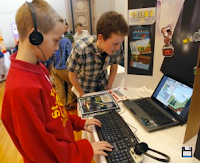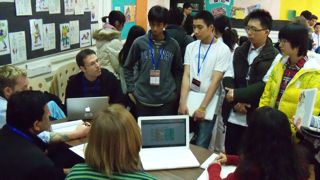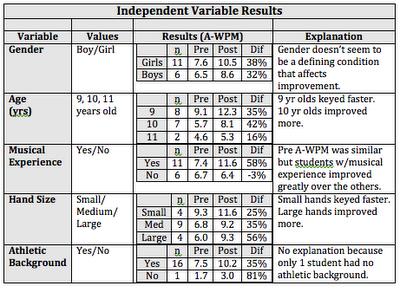Sorry that I haven't done much blogging during the conference. Web access has been quite splotchy so I haven't always had the access when I had the time to post. I hope that you have been following the blogs of the other students and attendees of this wonderful conference. If you haven't, look in the right column of this page to see links to blogs where you will find more stories of what has happened.
This conference has been all about Action. Vicki Davis and Julie Lindsay call it an Action-Based Conference. That means that it involves more
Doing and less
Watching.
Follow this link to the
Conference Program and you will see that there are very few lectures to watch and lots of time for students and teachers to work by themselves and together.
Strands
The essence of the Flat Classroom movement is collaboration. This means people working together. People working together to develop online experiences that cause learners to develop new understandings of each other and the global experience.
There are two strands:
Student Summit and
Leadership Workshop:
Student Summit Strand: Students are challenged to develop a Flat Classroom-style project that will help to promote awareness and global improvement based on the summit theme, 'Our Global Future Living Together'. This is something that they began on Thursday afternoon when they broke into groups. None of these group members knew each other before the conference. Together they identified ideas and created 2-minute "pitches" that they were to
present to the members of the Leadership Workshop on Friday morning. This format involves students presenting ideas to educators.
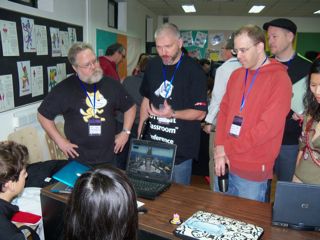 Leadership Workshop Strand: Educators (teachers, administrators and specialists) divide themselves into groups by grade level and interests. None of the members are to work at the same schools. Diversity of location is the name of the game here. Their assignment is similar to the students' assignment because they must develop a Flat Classroom-style project that they might use in their classrooms. This is important because the main goal here is to create content that will be used at a later time.
Leadership Workshop Strand: Educators (teachers, administrators and specialists) divide themselves into groups by grade level and interests. None of the members are to work at the same schools. Diversity of location is the name of the game here. Their assignment is similar to the students' assignment because they must develop a Flat Classroom-style project that they might use in their classrooms. This is important because the main goal here is to create content that will be used at a later time. The most interesting part of this assignment is that the Educators were to also develop a 2-minute "pitch" that they would
present to the members of the Student Summit. YES. Students were going to be asked to evaluate teachers' ideas.
Interaction
The strongest part of this experience was the interaction. Group members interacting with other group members from around the world. Teachers providing feedback for students. Students providing opinions about teachers' ideas for lessons before they actually have to experience them.
The students LOVED this, by the way. They loved telling their teachers what they didn't like about the proposal. =-) I was quite impressed with the suggestions they offered. It was like watching "Dancing with the Stars" or "America's Got Talent." Everyone wants to provide an opinion.
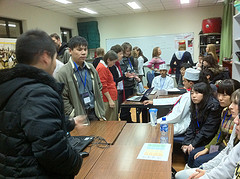 |
| yahoo.com/superkimbo |
By the way, let me point out that they didn't just make their pitches once. NOOOO. Each group had to pitch 6 times to 6 different groups. They had 2 minutes to make their pitches and then received 3 minutes of feedback about the pitch. It was interesting to watch the pitches get better and better with each review. It seemed to me that the teachers asked for more suggestions about how to make their pitches better.
Developing Their Ideas
Students: Once each group received their feedback, they took their proposals to the next step. The students began work on 7-minute presentations that they would do for a large group. These were proposal for projects. Some included
Creative Recycling,
Culture Connections, or energy monitoring systems.
 |
| yahoo.com/superkimbo | |
The whole group stood in front of 100 students and leaders to make their presentations. These presentations were then evaluated by the audience using an online polling system.
The top 6 projects have already been identified and they have been working with Bernajean Porter and Frank Guttler to create short videos of their final project. These will be shown at the closing ceremonies. This should be quite exciting.
Educators: The educators need to actually turn their ideas into Flat Classroom Projects. They have been provided with online wiki forms for them to complete. The first form was a Brainstorming form that helped them get their ideas together for their pitch. It involved analyzing their needs and then identifying Methods of Interaction that they would use in the project. These were completed on their wiki so that virtual members of their teams would be able to add to their ideas.
After they made their pitches and received their feedback, the educators were challenged to finish their Flat Classroom projects by completing an additional form that took them through the rest of the ADDIE process. This was also done on a wiki so that the virtual attendees would be able to give their input.
The educators don't need to present their ideas again. Their written work will be reviewed by me (Dr. Z), the Panther squad, and some Apple Distinguished Educators. We will use rubrics to identify the winners and the top 3 will share them at the closing ceremony.
All in all, this is an exciting conference to experience! It is TRULY and Action-Based Conference. It is all about doing things and interacting with other people and making things happen. Interestingly enough, these are the precise traits of the two ladies who put this conference together: Vicki Davis and Julie Lindsay.
I guess I should make a note that these are the traits of everyone they involved in making this conference happen. Learning at a conference is no longer about sitting in a chair and listening to lecturers share their lives and ideas. It is about making things happen now that can affect education later.
What do you think? How do you see this format as changing conferences as we know them?



